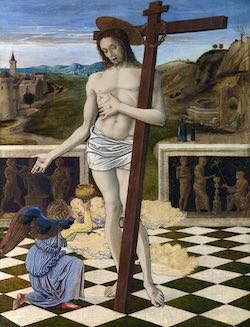Topic: 2. Sacrifice and religion: Comparisons, Antiquarians, Anthropology (16th-18th Century)
Religious sacrifices across various cultures and contexts sparked widespread interest in Early Modern Europe. As Christianity expanded into regions inhabited by "infidels" and "pagans", Europeans encountered a diverse array of sacrificial customs, ranging from the Sati rituals in India to the Aztec sacrifices in the Americas. This cross-cultural exposure captivated a wide audience, including theologians, philosophers, political thinkers, antiquarians, orientalists, missionaries, poets, artists, and even the general public. These encounters broadened the European understanding of sacrifice and led to a critical reassessment of classical and biblical sacrificial rites. This section includes:
- Sources: A selection of early modern printed materials, which include descriptions of the Americas, Asia, and Africa, alongside antiquarian and philological studies on religious sacrifice in classical antiquity and beyond. It also presents early modern works of ethnological observations and the first attempts to compare different sacrificial practices in various traditions and contexts, laying the groundwork for disciplines like the history of religions and anthropology.
- Iconographic Representations: A rich collection of images from the 16th to 18th centuries, illustrating a range of sacrificial rituals and practices as seen in different cultural and geographical contexts.
- Related Bibliography: An extensive bibliography spanning scholarly works from the 19th to 21st centuries, providing contemporary analyses and interpretations of these early studies and observations.
Ritual: Perspectives and Dimensions
New York: Oxford University Press, 1997.
Devi Kund Sagar: The Iconography of Satī and Its Absence in Bikaner’s Chatrīs
in: Royal Umbrellas of Stone: Memory, Politics, and Public Identity in Rajput Funerary Art, pp. 213–247
Leiden: Brill, 2015.
The Blood of the Redeemer (1460 - 1465)
National Gallery, London
Sanctifying the Name of God (Qiddush ha-Shem) in Christian and Islamic Countries during the Middle Ages
in: Jews, Christians and Muslims in Medieval and Early Modern Times. A Festschrift in Honor of Mark R. Cohen, pp. 169–194
Leiden: Brill, 2014.
De la boucherie et du sacrifice: le cas de l’islam
in: Revue du Droit des Religions, v. 12 (2021), issue : pp.35-45.
“Pour out the blood and remove the evil from him” The creation of a ritual of birth (‘aqīqa) in Islam in the eighth century 1
in: Childhood in History Perceptions of Children in the Ancient and Medieval Worlds, pp.
London: Routledge, 2018.
Multiple Meanings of Buddhist Self-Immolation in China: A Historical Perspective
in: Revue d'Etudes Tibétaines, v. 25 (2012), issue : pp.203-212.
Le sacrifice en islam
in: Pardès, v. 22 (1996), issue : pp.27-34.
Two takes on the Abraham story
in: Anthropology Today, v. 15 (1999), issue 1: pp.1-2.
‘Internalized Fire Rituals in India and Tibet
in: ournal of the American Oriental Society, v. 120 (2000), issue 4: pp.594-613.
Le sacrifice
in: Le vocabulaire des institutions indo-européennes, pp. 223-231
Paris: Les Éditions de Minuit, 1969.
0. General bibliography (19th-21th Century) 2. Sacrifice and religion: Comparisons, Antiquarians, Anthropology (16th-18th Century)
Le sacrifice
in: Le vocabulaire des institutions indo-européennes, pp. 223-231
Paris: Les Éditions de Minuit , 1969.
Sur la terminologie iranienne du sacrifice
in: Journal asiatique, v. 252 (1964), issue : pp.46-58.
Um exemplo de continuidade entre a representação do sacrifício cristão, hebraico e greco-romano no Renascimento: o friso da nave central de San Giovanni Evangelista, em Parma
in: Figura, v. 8 (2020), issue 1: pp.164-183.
1. Sacrifice and Bible (16th-18th Century) 2. Sacrifice and religion: Comparisons, Antiquarians, Anthropology (16th-18th Century)

